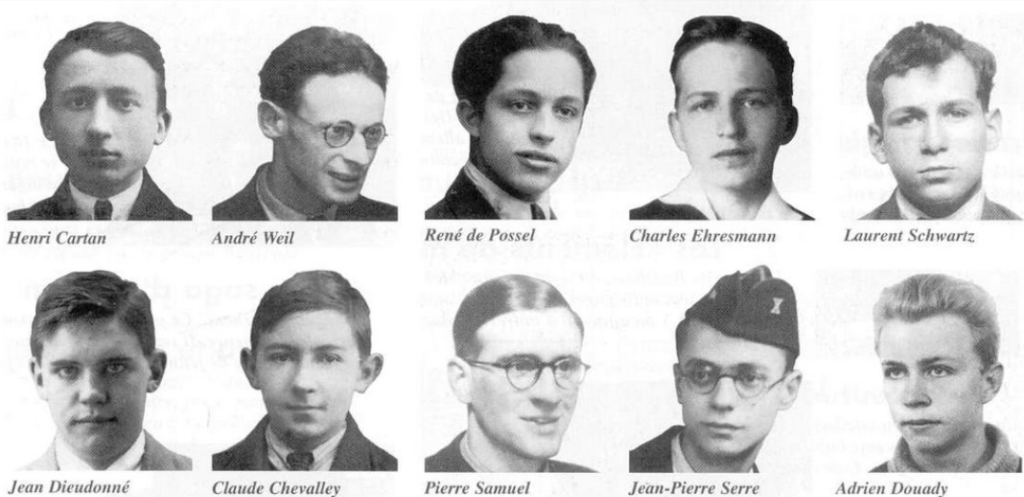
Nicolas Bourbaki is a non-existent and ever-changing individual who has left an indelible impression on modern mathematics. There are several accounts of his life and accomplishments by many distinguished mathematicians, some of whom were a part of this composite character. I shall therefore limit myself to a short summary of his birth and life, and follow it up with his influence on Indian mathematics, including how I personally benefited from his methodology.
The story of his birth that I have heard, a possibly apocryphal one, is the following. In the mid-1930s, top French mathematicians such as André Weil, Henri Cartan, Claude Chevalley, Jean Delsarte and Jean Dieudonné were once discussing the details of Green’s theorem, Stokes’ formula, etc., and found that there was a lot of confusion regarding the generality in which these results were valid. They did not find any reliable and satisfactory account and so decided that there was a case for starting from scratch, namely, set theory, and building up facts with rigour and generality, particularly regarding analysis. Jean Coulomb, Charles Ehresmann, Szolem Mandelbrojt and René de Poussel were also said to have been part of the original group, but withdrew a little later.
The origin of the name “Bourbaki” is interesting. Apparently, there was a spoof of a lecture by a student at the École Normale Supérieure, who came dressed up as an intellectual. Sporting a false beard, he is said to have given a lecture stating totally false theorems with great seriousness, even attributing them to ostensibly great mathematicians, whose names were actually taken from the list of soldiers of the Franco–Prussian war. This caused considerable mirth among students and even some faculty. The last theorem that the student presented was attributed to a certain “Bourbaki”.
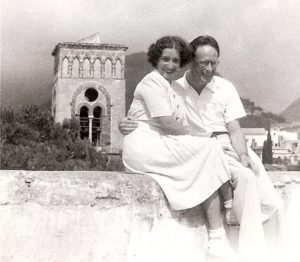
Accordingly, Bourbaki was the name that the group of mathematicians mentioned above decided to take for the authorship of their joint endeavour, and it is said that Weil’s wife came up with the first name “Nicolas”. This seems to have been the only feminine touch in the entire Bourbaki saga. To my knowledge, there has been no lady Bourbaki, which is why I refer to Bourbaki as a man rather than as a person.
Bourbaki decided to develop many areas of mathematics, starting right from the basic axioms. The ground rules agreed upon were that there would be periodic meetings every summer to discuss drafts, and only when there was unanimity, would they be finalised. This was a demanding process since everyone was extremely critical, and so the first volume with the authorship of Bourbaki came out only after four years, in 1939. Even this accomplishment would have been impossible but for the indefatigable energy of Dieudonné who appointed himself the scribe.
It was also agreed that mathematicians over 50 would retire from the effort, and the group would expand from time to time. Over a period of time, nearly thirty mathematicians constituted Bourbaki. Initially they were all French but later the Polish-born American topologist Samuel Eilenberg was made the first non-French Bourbaki and much later, others such as the algebraic number theorist Serge Lang, were inducted.
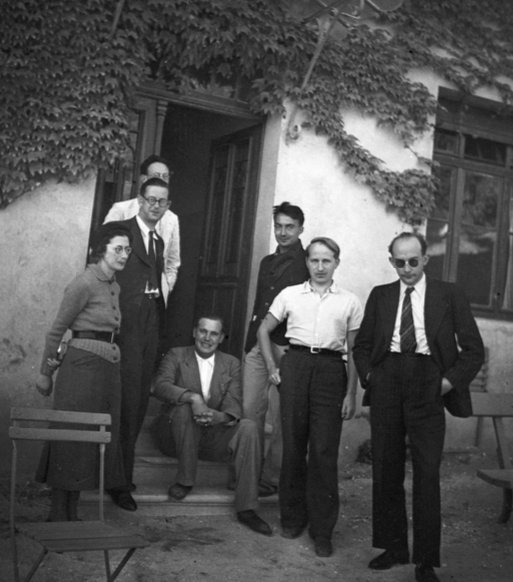
As the programme progressed, several new concepts also entered the world of mathematics. The notions of “filter’’ (due to Henri Cartan) and “uniform spaces” (due to André Weil), were introduced into topology. These served to clarify and generalise results (particularly in the study of function spaces), which were till then available only for metric spaces. A detailed study of topological vector spaces (presumably by Laurent Schwartz, in connection with his theory of distributions) was again a Bourbaki effort.
But more than the new ideas that were introduced, the methodology that was adopted deserves special mention. In mathematical exposition, there are two options. One may first give many examples, and thus motivate the theory that follows. Alternatively, one may present the theory first, and only later offer examples that illustrate the theory. Soon any perceptive teacher will realise that some students prefer the first option, and some others the second. Of course, successful teaching needs both, and adopts a middle path. Bourbaki, however, catered only to the second approach.
This approach has resulted in adulation of Bourbaki by some, and criticism by others. Nevertheless, the mark that Bourbaki has left on mathematical exposition is a lasting one. There has been a decisive change in expository style after the advent of Bourbaki. To see this, I reproduce below a paragraph from a book of the pre-Bourbaki era on the notion of a function.
independent, but are connected by a relation which we can imagine expressed as a relation between x and y, so that, when P and x are known, Q and y are also known. We might, for example, suppose that y = x, or 2x, or 1/2 x, or x^2 + 1. In all these cases the value of x determines that of y. Or again we might suppose that the relation between x and y is given, not by an explicit formula for y in terms of x, but by means of a geometrical construction which enables us to determine Q when P is known.
There have indeed been lengthy discussions in standard textbooks whether \log(x) is a function of x in C or not, even if 0 is omitted from the domain, and there have also been more abstruse discussions of a differential of a function, and so on.
While one cannot question the mathematical accuracy of the statements, the style may certainly not be one suited for present-day students who would like to grasp mathematical concepts quickly. It is therefore certainly a relief to get the Bourbakian perspective:
Bourbaki’s mode of exposition, consisting of the arrangement of all the text under: Definition, Theorem, Proposition, Lemma, Proof, Example, Remark, etc., is without doubt welcome. Personally I even like his “tournant dangereux!’’ (a “danger bend” sign), warning the reader not to make a wrong conclusion. Soon, Bourbaki realised that in addition to writing a text as mentioned above, it was also necessary to have discussions on contemporary topics that the text itself cannot cover in a reasonable time frame. To address this problem, Bourbaki met twice or thrice a year and arranged lectures on areas of the then current and topical interest. These “exposés” were also published in the widely popular series Bourbaki Seminar.
In the Indian context, in the first half of the twentieth century, because most professors in colleges were only aware of what they themselves had learnt in their youth, and had neither the time nor the incentive to learn topics of current interest, the basic knowledge of students graduating even with a master’s degree was very poor. Those like me, who became graduate students, had hardly any basic preparation. I must mention that institutions such as the Tata Institute of Fundamental Research (TIFR) in Bombay and the Indian Statistical Institute in Calcutta were fortunate to have had mathematicians with the vision and the administrative acumen to understand that this lacuna could only be bridged by getting top-class mathematicians from abroad to visit them, for a month or two, and also lecture on current topics.
TIFR had the good fortune to have had Laurent Schwartz as a visitor in its early years. He was, however, not the first Bourbaki to visit India. André Weil had spent two years as a visitor to Aligarh Muslim University in the 1930s. He made contact with a few Indian mathematicians who were active at the time. I wonder if he spread the word in French mathematical circles about the intellectual potential in India, then a primarily British colony (and a tiny bit of which was French too).
In any case, Schwartz was impressed with the ability and receptivity of the graduate students at TIFR, even if their basic preparation had not been extensive. On his return to France, he induced many of his fledgling students to visit India for a couple of months each and introduce to Indian students a new area of contemporary interest. Professor K.~Chandrasekharan, who was at the helm of the School of Mathematics, had the vision to see that the consequent broadening of interest was essential. He also arranged to have bright students from TIFR visit France to learn and derive benefit from a wider exposure.
Schwartz was the first Bourbaki I met. When I aspired to be a graduate student at TIFR, there was a selection interview which I had to go through. Schwartz was visiting TIFR at that time and had been inducted as a member of the selection committee. I do not recollect any question that he asked, but I did feel that he was favourably impressed, and I became a graduate student there.
Soon after I joined, I was asked to study set topology. One of my seniors suggested that I study Topologie Générale by Bourbaki. No English translation of the book was available in those days, and so I protested that I did not have any knowledge of French. I was told to go to the library and borrow the book of Bourbaki, as well as a French dictionary. So I learnt a little French and topology simultaneously!
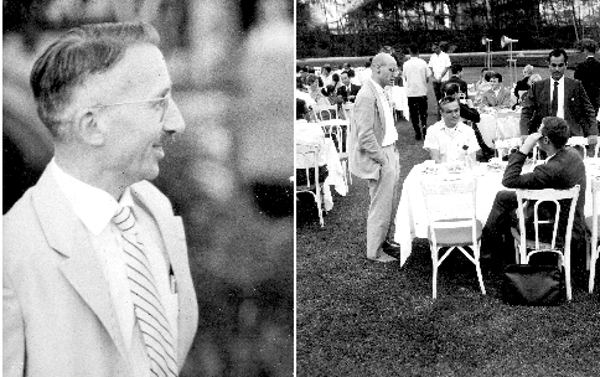
(Right: L to R) Alexander Grothendieck, Armand Borel, C.S. Seshadri TIFR Archives
At the end of my first year there, two Bourbakis, Francois Bruhat and Bernard Malgrange, were among the visiting mathematicians and gave courses on “Lie Groups and representations of Locally Compact Groups” and “Functions of Several Complex Variables” respectively. I was asked to write up the notes of Bruhat’s lectures. Ahead of his visit, I wished to prepare myself. One of the senior members of TIFR came to my table and saw me trying to read up Chevalley’s Lie Groups. He shook his head and said, “Go to the masters, don’t read these books.” I took this seriously, and borrowed Élie Cartan’s Collected Works from the library (which, by the way, was very well equipped). Soon after his arrival, Bruhat greeted me and was flabbergasted to see Cartan’s collected works on my table. He asked me what I was reading, and when I told him that I was trying to understand Cartan’s thesis, he was incredulous and asked me to return it to the library at once and borrow the Sophus Lie seminar instead! I mention this here only to show that it is essential to have guidance from working scientists in order to get a taste of the contemporary state of the science.
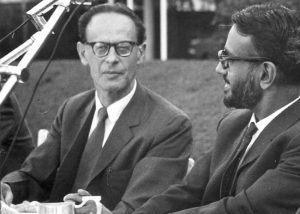
Writing up Bruhat’s lectures was a daunting task, since at the time of joining TIFR, most students, including myself, had only a rudimentary knowledge of groups, and not even that, of topological spaces. Bruhat’s course, however, included the direct integral of Hilbert spaces and the Plancherel integral of representations in them! If I managed to write it up at all, it was due to Bruhat’s (Bourbakian) lecturing style, and his helpfulness and understanding afterwards.
The Bourbakis who visited TIFR for a month or more included Armand Borel, François Bruhat, Jean-Louis Koszul, Pierre Samuel, Jean Delsarte, Michel Demazure, Jean-Louis Verdier and Samuel Eilenberg. Among the other Bourbakis, almost all of them, with the notable exception of Claude Chevalley, visited for shorter periods of time. Thus, our intellectual debt to France in this regard, particularly to Bourbaki, is immense. Personally, I benefited a lot from the courses of Koszul and Borel, besides that of Bruhat, particularly since I was to write up notes of their lectures for the TIFR series.
I learnt differential geometry from Koszul. An important contribution of his was the algebraic approach to connections on fiber bundles which he explained in his lucid lectures, and which were very much in the spirit of Bourbaki. Soon thereafter, I worked with M.S.~Narasimhan and proved the existence of universal connections1 which made an impact on that area of mathematics. Much later, Narasimhan and I had the opportunity of collaborating with a Bourbaki, namely Arnaud Beauville.
The positive influence of Bourbaki, not merely in the exposition of basic mathematics, but for the then ongoing research as well, was significant. I shall recount a couple of these here.
In the late 1940s and early ’50s, algebraic topology came into great prominence. Eilenberg (with Saunders Maclane) came up with the notion of categories and functors in this context. Although Bourbaki himself did not deal with these in his books, the spirit is very Bourbakian. This resulted in looking at homology and cohomology as functors, and later even led to K-theory, which served to solve many problems and clarify many more.
One of the great successes in this regard was Grothendieck’s Riemann–Roch theorem. Grothendieck formulated Chern class (or rather, the Chern character) as a functor from classical cohomology to K-theory, and thus reduced things to a computation on the projective space!
Grothendieck too became more and more enamoured of generality. In fact, even his Riemann–Roch theorem was actually published by Armand Borel and Jean-Pierre Serre (with the added phrase “after Grothendieck”). The general formulation of theories he came up with were effective, but perhaps his passion for greater and greater generalisation also blocked the progress of his “Elements de Geometrie Algébrique”.
One of the areas on which Bourbaki did not leave his impression is the theory of probability. Michael Atiyah points out in a book review that Bourbaki’s restriction of probability theory to locally compact spaces was not very desirable. Also, the style to which Bourbaki was committed prevented him from delving into some areas of theoretical physics bordering on mathematics, since these required, at least a priori, a practical understanding as well.
In any case, whatever be one’s misgivings, Bourbaki’s legacy to modern mathematical exposition and research is immense. Its impact, especially on Indian mathematics in the second half of the twentieth century, was definitely very positive.\blacksquare
acknowledgement I am thankful to my daughters Sumana and Kavita for their inputs and suggestions.
Footnotes
- M.S.~Narasimhan and S.~Ramanan. July 1961.“Existence of Universal Connections”. Amer. J. Math. 83 (3): 563–572. ↩
